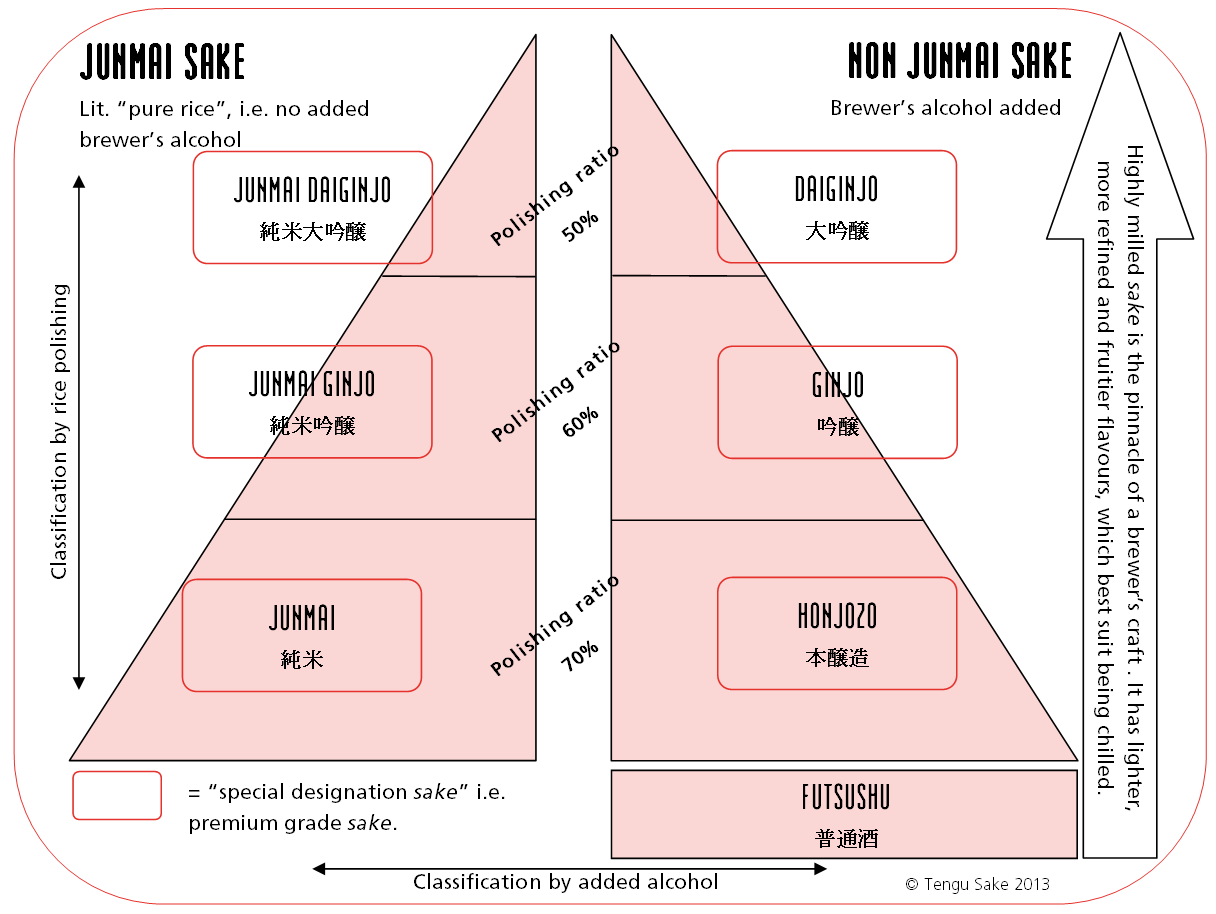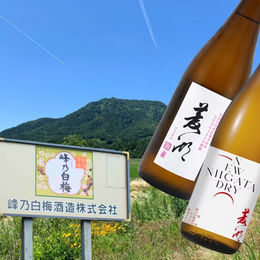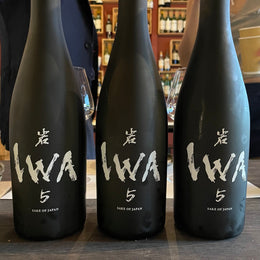
Dewazakura Shuzo’s award-winning Oka Ginjo sake has become a legend in its own right, owning its claim to fame in catalysing the sake world’s Ginjo boom in the 1980s. Dewazakura Shuzo is a sake brewery based in Tendo City, Yamagata Prefecture, with a history of over 100 years. The brewery was founded in 1892 by Seijiro Nakano and was one in three sake breweries owned by the Nakano family. The Dewazakura Shuzo brewery is located in the Yamagata Basin and surrounded by mountains, becoming very warm in the summer and receiving a substantial amount of snowfall during winter. The natural features and climate of the environment makes the region a major producer of rice, which is used in Dewazakura Shuzo’s sake making.
 (Dewazakura Brewery in Yamagata (Image Source: Klook.com)
(Dewazakura Brewery in Yamagata (Image Source: Klook.com)
Today, we’re having a go at the Oka Ginjo to learn a little more about what gives this sake its legendary status, and maybe learn a little more about a part of sake history as well.
Before mainstream Ginjo, there was the old sake classification system.
We’re used to identifying and assessing sake based on the sake grading classification system today – your Honjozos, Daiginjos, Ginjos, Junmais and non-Junmai sakes, based on details such as the degree of rice polishing (semai buai), and whether brewer’s alcohol has been added into the sake. We accept that these layers of nuance and subtle distinctions are a vital part of what the art and craft of sake is all about. Most people who have had their fair share of sake would very likely be familiar with the word Ginjo.

The sake classification system that's in use today to identify the different grades of sake (Image Source: TenguSake.com)

However, this classification system is actually a fairly modern conception, and before the multiple different sake grades we have today, there used to be only 3 grades under the old Kyubetsu Seido (which translates to “Classification System”) sake grades, which was in place from the 1940s to the end of the 1980s. Sake was very simply categorized starting from "Second Class" or Nikyu (almost as if it was considered too crude to label anything as “Third Class”), to "First Class" or Ikkyu, and at the top, Tokkyu or "Special Class". This classification system didn’t place any focus on the degree of rice polishing, and there was no concept of any distinction between Junmai and non-Junmai sake.
You might be thinking, “Without using objective benchmarks such as rice polishing and production techniques to form basis of sake grading, wouldn’t that make this minimalistic sake grading somewhat ambiguous and arbitrary?”, and you would be right to think so! Sake was graded based on what sake brewers would submit to the Japanese government tax department’s official sake tasters and graders, who would assess and grade the sake based on the Kyubetsu Seido (Nikyu, Ikkyu, or Tokkyu), and in effect also decide the amount of alcohol tax to apply depending on the sake grade (the higher the grade, the higher the tax).
This simple grading system acted as a mark of premium quality to consumers, who had no need to concern themselves with the details, as long as the the sake was guaranteed to be Ikkyu or Tokkyu. The higher tax rates on more premium grade sakes also meant higher prices, and the premium grade sake category was dominated by large sake breweries, while smaller regional breweries would be consigned to the “Second Class” Nikyu sake grade.
Whether or not this system was an effective way to truly determine the quality of a sake was indeed questionable, and Dewazakura Shuzo, a small regional brewery in the 1980s, would come forth as a pioneer to contend with this system. The brewery would sell high-quality Ginjo sake as a Second Class sake, which also meant that they could sell it to consumers at a more affordable price as the taxes they would have to pay would be lower.

Ginjo sake used to only be a competition sake, submitted to professional sake tasters for sake competitions (Image Source: japantravel.com)
Instead of focusing on the Kyubetsu Seido sake grading, Dewazakura Shuzo began to market Ginjo sake in 1980 with this very Oka Ginjo sake – the first commercially and accessibly marketed Ginjo sake of its kind. For a Ginjo sake to be classified as Ginjo, the sake rice used in production needs to be polished by at least 40%, leaving behind 60% of the rice grain. While consumers may have been familiar with Nikyu, Ikkyu, and Tokkyu, Ginjo and rice polishing was not widely known among mass consumers, and Ginjo sake was mostly only brewed and drank for sake competitions. Being a “Second Class” Nikyu sake also meant that such delicious high quality Ginjo sake could be priced affordably and accessibly for consumers to drink!
This clever gamble from Dewazakura Shuzo paid off – the brewery’s Oka Ginjo is now attributed as being the catalyst to the “Ginjo Boom” of the 1980s, with many other breweries following their lead and brewing and marketing Ginjo sakes to be made available to the public.
A Closer Look at the Dewazakura Oka Ginjo “Cherry Bouquet”

The Oka Ginjo is made using Miyama Nishiki rice. Miyama Nishiki rice grows and thrives in colder climates, and produces sakes with a clean, smooth, light, and refreshing texture. It is also often used to produce Ginjo sakes.
The rice used to make this Oka Ginjo is polished to 50%, meaning that 50% of the rice grain’s outer layer of protein has been milled, leaving the rest of the inner starchy rice core to be used to brew the sake.
Now, on to the tasting!
Colour: Clear, colourless.
Aroma: An aromatic floral bouquet, with a whiff of steamed rice. There’s also traces of vanilla, and a sweet hint of cherry blossoms. The nosing of this sake suggests the sweetness to come with the tasting.
Taste: True to the aroma of the sake and as the name Oka Ginjo “Cherry Bouquet” would suggest, there’s the floral sweetness reminiscent of cherry blossom and rose water, with the bright citric fruitiness of pear and Japanese melon.

The flavours and aroma are elegantly integrated together in a harmony, making for a delicate and refined drinking experience that kept me reaching for more and more sips. It brings a certain image to mind – having a fruit picnic in a floral garden, the taste of fruits on the tongue and the lingering scent of flowers and cherry blossoms.
Body: The Oka Ginjo makes for a very pleasant sipping experience, and letting the sake sit in the mouth allows one to take in its medium body and soft viscosity. This is a sake carries its weight in flavour and complexity for sure.
My Thoughts
I have to applaud Dewazakura Shuzo’s innovativeness and express my appreciation for the brewery’s willingness to take the risk to bet on the success of the Oka Ginjo. This sake is a classic and a legend for a reason, and a fantastic introduction for any new sake drinker into the world of Ginjo sakes.
This is a delicious high-quality sake by today’s standards, and I can only imagine what the people back in the 1980s must have thought when they tried the first marketed Ginjo sake, Oka Ginjo, for the first time. “I can’t believe this isn’t a Special Class Tokkyu-grade sake!” These thoughts were surely running through the minds of drinkers then. And it must have given the Japanese government’s tax department some anxiety about the existing traditional sake classification system then too, who, based on the Kyubetsu Seido, were not able to charge “Special Class” taxes on an unranked “Second Class” Ginjo sake. It’s not hard to imagine how and why the Oka Ginjo started a craze and boom in the demand for Ginjo sakes.
Eventually, the old-school 3-tier sake classification system would be abolished and replaced with the current one we have in place today, but that doesn’t stop us from enjoying and appreciating the Oka Ginjo for what it is – an elegant and refined harmony of sweet floral aromas and tropical fruity flavours.
My Rating |
🌸🍐🍈A solid Ginjo and a great introduction to the Ginjo sake category for any new sake drinker – the aromatic floral and cherry blossom flavours and wonderfully balanced with the fruitiness of pear and Japanese melon. Yum! |
Till the next time, happy sipping!

@ChopstickPride







